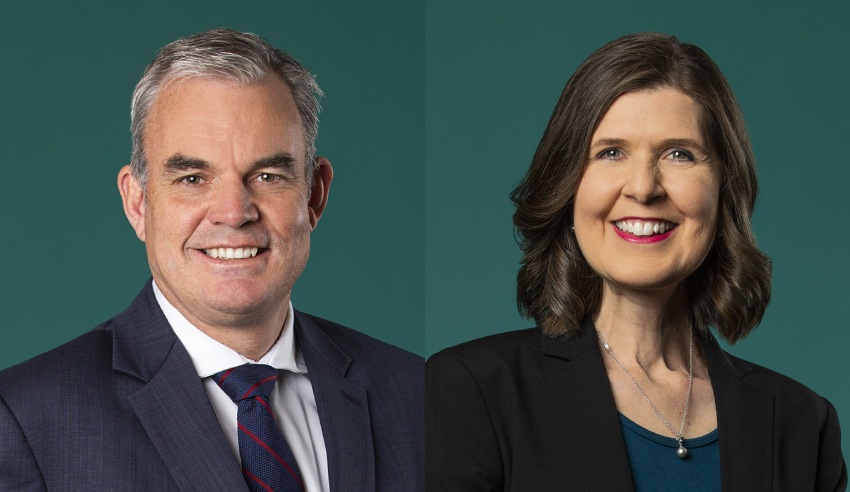Following the release of the Workplace Gender Equality Agency list of Employers of Choice for Gender Equality, two senior legal executives from Maddocks share just how far gender equality has gotten them.

After receiving the WGEA citation for the 20th year, Maddocks chief executive David Newman told Lawyers Weekly that gender equality has played a large role in the growth of the firm.
“Our employer brand is associated with gender equality in part due to our continued participation in the WGEA Employer of Choice for Gender Equality citation which has attracted high quality female talent to the firm.”
The representation of women within the firm has more than doubled in the last decade, rising from 18 per cent in 2011 to 38 per cent now. In addition, three of the four Maddocks directors are women.
“Gender equality is important to us because what we have found over those 20 years is that having a diverse mix of people with different experiences and backgrounds provides deeper thinking and a more well-rounded approach to how we work with our clients and how we work with each other. That all leads to better business outcomes for us and our clients,” Mr Newman added.
“Gender equality is also important to us because it is important to our clients. Increasingly we are being asked by clients to present diverse teams and we are proud that we are able to genuinely respond to our client’s expectations and that of the broader business community.”
Late last year, Mr Newman told Lawyers Weekly his main priority for the firm over the course of 2022 was for the firm to continue to face challenges head-on and “find ways to work with our clients in new and innovative ways.”
“We do great work within an inclusive workplace. We make sure all of our people are able to bring their real selves to work and we make sure all of our people have the same opportunities for career progression. One of the things we have done to foster this culture over the past decade is set targets for female representation in leadership. Our board recently endorsed new targets to 2025, adopting the 40/40/20 model for leadership roles across the firm,” he said at the time.
The Maddocks board originally set these targets in 2014 – and partner and chair of the firm’s diversity and inclusion strategy committee, Alicia Albury, said that there are a number of initiatives the firm has instituted over the last 20 years to embed change.
“One of the crucial aspects of the Workplace for Gender Equality’s work is providing us with a roadmap for best practice and to allow us to benchmark ourselves against Australia’s top organisations and not just law firms. This allows us to engage widely with organisations to understand what works and to allow us to share our experiences with them as well,” she said.
“Diversity and inclusion are not compartmentalised at Maddocks. It is an important consideration for every decision we make at Board level. [We also have] an annual gender pay gap analysis, which is also reported to the Board. This then feeds into the way we remunerate our people and our recruitment strategy.
“We are proud to have led the way within the Australian legal profession when it comes to promoting the benefits for everyone of a diverse and inclusive firm. We have done so through our support of the Warren Moot, which provides a forum for young female advocates, and our signing up to the Law Council of Australia’s equitable briefing policy and the NSW Law Society Charter for the Advancement of Women.”
Another initiative the firm has implemented is Maddocks Women, which was formed in 1997 as a way of providing a forum for women at the firm to advance their careers by developing their networking skills and their networks.
“It has allowed multiple generations of women at Maddocks to develop their practices and have greater control of their careers. Many of the participants in Maddocks Women are now leaders of the firm,” Ms Albury said.
“We are proud to have this ongoing employee resource group that has continued to evolve and respond to the different challenges that have emerged over the past 25 years.”
In addition, the firm also partnered with virtual midwife service Birth Beat late last year, in a landmark move to “help with the recruitment and retention of parents” and further support staff wellbeing.
And whilst the profession has come a long way over the past decade, law firms need to continue to support each other and share their experiences “in creating truly inclusive organisations”, according to Mr Newman.
“One issue that has received significant attention in the past few years, and rightly so, is harassment and bullying within the legal profession. As we saw in the 2019 Victorian Legal Services report into sexual harassment in the Victorian legal sector and the subsequent work being done by the Law Institute of Victoria Advocates for Change, there is still some way to go for the legal profession to say that everything possible is being done to provide safe workplaces for everyone,” he said.
“One thing all law firms do well is to share their experiences of what has or hasn’t worked for them when it comes to creating a diverse and inclusive workplace. Each firm is different and has unique challenges, but it is important that we do work together so that we learn from each other for the betterment of the broader legal profession.”

Lauren is the commercial content writer within Momentum Media’s professional services suite, including Lawyers Weekly, Accountants Daily and HR Leader, focusing primarily on commercial and client content, features and ebooks. Prior to joining Lawyers Weekly, she worked as a trade journalist for media and travel industry publications. Born in England, Lauren enjoys trying new bars and restaurants, attending music festivals and travelling.